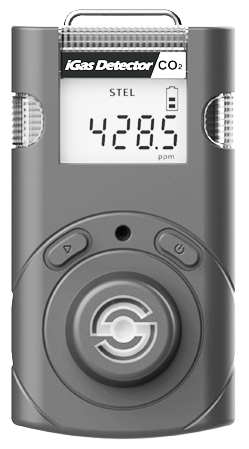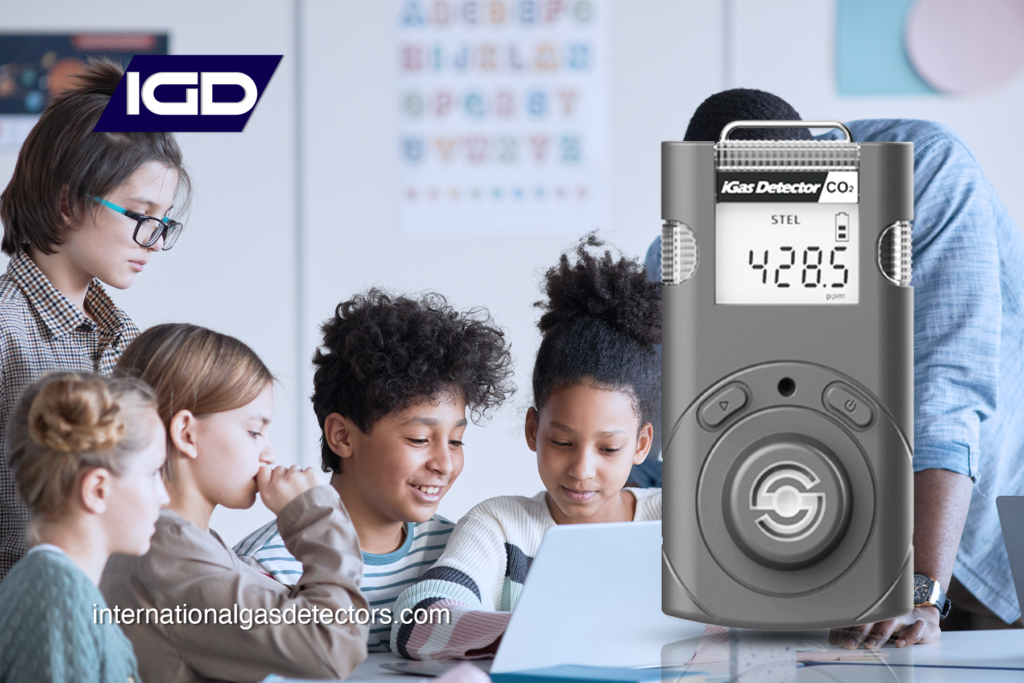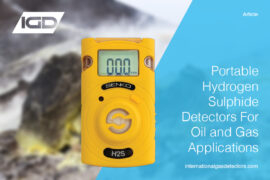Carbon dioxide can present several hazards if an environment is over saturated with it. On average in an outside environment the background CO2 level will be around 400ppm. The average person will exhale around 4.5% CO2, roughly 100 times more than the average background level. This means that 30 people in a classroom without forced ventilation, relying on natural ventilation from windows can very quickly see a very high CO2 level develop. So CO2 can be a very good indicator for how well a room is ventilated and therefore also an indicator on the likelihood of the Covid-19 virus mixing in the atmosphere. Carbon dioxide monitors are a good way to monitor constantly busy rooms and can help in increasing air ventilation to reduce the impacts of COVID-19. It is also vital to monitor CO2 levels to ensure compliance to government notice BB101.
But how do I know if I need a fixed, desktop or portable carbon dioxide monitor? Not to worry, our article below discusses this in depth to help you with deciding what carbon dioxide monitor you require and our solutions.
UK Government Advice on Carbon Dioxide Monitor
The UK government is becoming increasingly concerned and vigilant surrounding the airflow within various Industries and educational settings. A recent press release from the UK government discussed the implementation of portable carbon dioxide monitors into classrooms. This investment will see around 300,000 monitors being applied into classrooms to help with air ventilation and hopefully reduce the spread of COVID-19 within schools. This will also help in providing children with more freedom around their schools and colleges and provide the best possible, uninterrupted education. The spin off here being that well ventilated rooms with levels meeting the requirements of BB101 are also better learning environments. High CO2 levels contribute to ‘stuffiness’, headaches and what is known as bad building syndrome resulting in poor attention spans.
Carbon dioxide monitors can also be applied into other busy, public areas such as restaurants and shopping centres. Again, monitoring the CO2 levels in these environments can potentially help in reducing the spread of COVID-19 as it can monitor the area and alarm when the air is too CO2 saturated.
To read more about the UK governments plans, click this link.
Fixed or Portable Carbon Dioxide Monitors in Classroom Environments?
Currently, there are many recommendations for using fixed carbon dioxide monitors in classroom environments, as well as many other busy areas. BB101 lists specific maximum target levels for different settings. As we have already established, using carbon dioxide monitors can be very beneficial in reducing COVID-19 spreading, however, using fixed CO2 detection may not be ideal for this specific application. IGD and the UK government recommend portable carbon dioxide monitors for classrooms and other busy environments, as these can provide better detection and convenience to the user.

Pictured: iGAS portable carbon dioxide monitor. Simple to use and affordable. Available from IGD with next day delivery.
Fixed carbon dioxide monitors only detect up to a 5m radius, and this is cut in half when detectors are placed on walls. Detection for CO2 is also weaker the further away it is from the fixed sensor, so you need more CO2 saturation for it to go into alarm. This means it can be great for detecting gas leaks from a known source, however in a classroom where people are constantly moving, and there is a larger than 5m radius, it may not sufficiently detect CO2. Portable carbon dioxide monitors can provide a more accurate indication of the air quality, as the user will be moving around the room constantly, so will be monitoring the entire room.
Most schools and busy buildings, such as restaurants and shopping centres, across the UK do not have an on-demand ventilation system connected to a BMS system. This could make fixed carbon dioxide monitors futile as human intervention is needed to improve the air quality of a room. Colour change indication on fixed carbon dioxide monitors can also be missed as it is fixed in one place so could be out of view. This could mean that air quality is not attended to when needed, and the spread of COVID-19 could increase. Portable carbon dioxide monitors are therefore ideal for classrooms and busy environments, as the user is informed immediately when the air is too CO2 saturated and human intervention, such as opening a window or door, can take place faster.
Thus, portable carbon dioxide monitors are more adequate for air ventilation monitoring and may be the best option in providing protection from COVID-19.

Pictured: iGAS CO2 Detector used within classrooms by teachers.
Choosing the Right Carbon Dioxide Detector
In terms of choosing the right portable carbon dioxide monitor, IGD are backed by a century of industry experience, with expert knowledge in gas detection. This allows us to offer detectably better carbon dioxide monitors and provide the best possible advice on what type of detector is needed, the placements, and whether portable or fixed is necessary.
In addition to this the UK Health and Safety Executive have released guidance on how to use portable carbon dioxide monitors in schools to measure the room air quality. To quote the HSE:
- Check your monitor is calibrated before making CO2 measurements. Follow the manufacturer’s instructions, including the appropriate warm-up time for the device to stabilise
- Know how to use your portable monitor correctly, including the time needed to provide a reading
- Take multiple measurements in occupied areas to identify a suitable sampling location to give a representative measurement for the space. In larger spaces it is likely that more than one sampling location will be required.
You can read further on this guidance here.
The video below highlights the key features of the iGAS portable carbon dioxide monitor.
Are All CO2 Monitors the Same?
It is also important to understand that not all CO2 monitors operate in the same manner. Many cheap fixed CO2 detectors utilise built in software correction which makes assumptions regarding background levels. These detectors are commonly employed in building management systems and are used to trend levels rather than report on absolute levels. Their built in ‘ABC’ correction software assumes the lowest reading over a given period (usually 24 hours) is the normal background and corrects the reading to approx. 400ppm. So, if pupils leave a room at the end of a day and ‘close up’ whatever background level is present (and this could be anything up to 4500ppm or more) ends up being corrected to 400ppm. This is very misleading and, in many cases, dangerous. So for this type of application its important to steer clear of ABC corrected detectors, this is not their application.
IGDs Portable Carbon Dioxide Monitor Solution
IGD offer the iGAS carbon dioxide monitor for portable CO2 detection. This lightweight device offers clear and concise alarming, customisable to your environment. This making it ideal for a classroom, as vibration alarms can be enabled to not disturb those learning but to notify the user quickly. Thus, the air flow of the area can be fixed quickly.
The iGAS carbon dioxide monitor also boasts the longest battery life on the market; a 14 day run time off a single charge. This ensures constant monitoring in the area and allowing you to charge at times convenient to you, such as over the weekend for schools and teachers.
This compact device is built to last, so there is no need to worry about hefty upkeep costs and has a simple operating system. Thus, time is not wasted on lengthy training times and costs. You can learn all about the features of the iGAS CO2 portable detector on our article here.
IGD is the approved UK servicer and distributor for Senko, as well as offering free training for this iGAS carbon dioxide monitor. Click here to purchase the iGAS online today or contact our team for more details.




